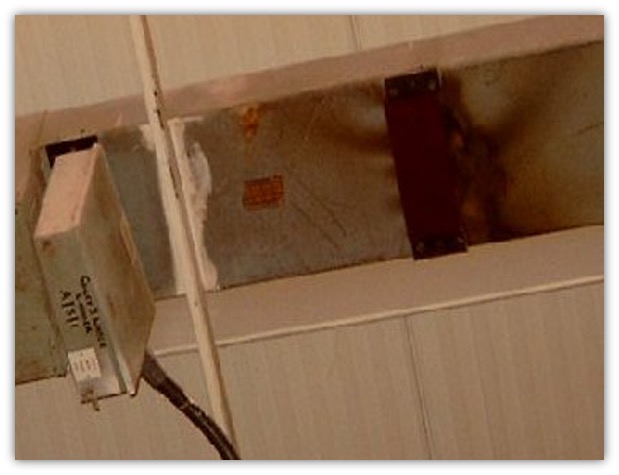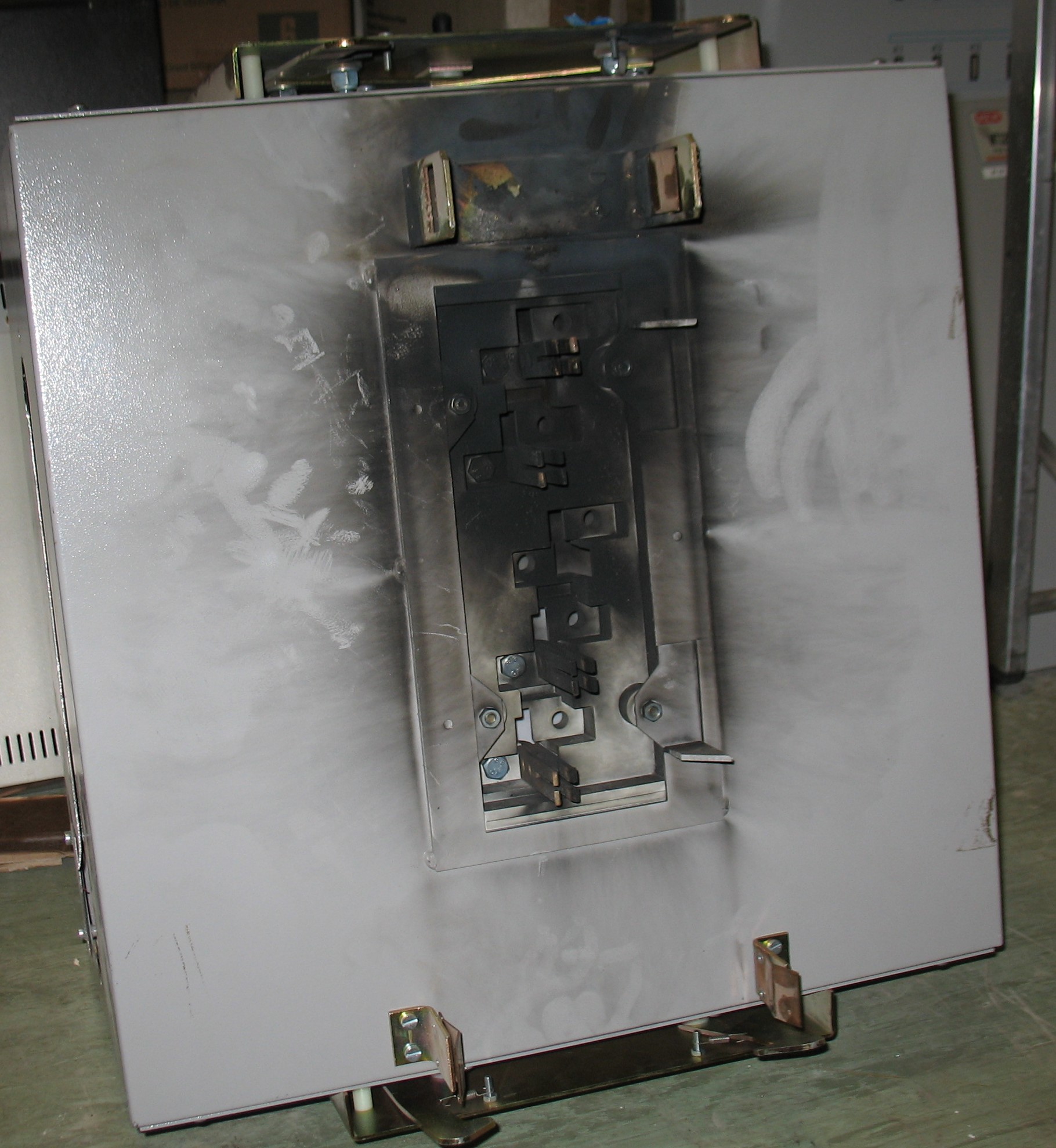12.10 Changing Busbar Tap off Units.
From my extensive experience in undertaking electrical surveys across Europe, I came across many unsafe acts, but I would like to highlight three particular examples concerning the changing of busbar tap off units. One was a bakery, the second a famous university and the third was a high-tech manufacturing facility in mainland Europe.
12.10.1 The Bakery
One of the many electrical safety surveys that I carried out was to a bakery. Overhead busbar trunking was used throughout the plant to provide power for machines and associated control panels. One of the two systems in use was nearly 50 years old and obviously long since obsolete. The rating of the busbars was 630 amperes and 800 amperes, and they were protected by HRC fuses. Unswitched plug in fused tap off units were only accessible by a mobile elevated platform or scaffolding and were released by two wing nuts. Engineering staff were uneasy about the practice of releasing the tap off units whilst they were still live but still persisted because of the perceived disruption to the bakery electrical supplies. I had grave concerns for any live work to be undertaken on the busbar system due to the following.

Figure 12.6 Damaged tap off point
The effect of an electrical flashover occurring with an operative in close proximity is likely to have been extremely serious and resultant burns could be life threatening. This is made worse by the fact that the operative will be constrained by a mobile elevated platform cage or scaffolding. There were signs of water ingress near the 630 ampere busbar trunking and in discussing this with front line staff I found out that there had been a fault as a result. There had also been an electrical flashover at some time in the past on the 800-ampere busbar trunking because I could see the damage from the ground. See Figure 12.6./p>
Nobody knew the cause of the damage until I spoke with one of the long serving electricians on site who remembered the event vividly. Whilst taking a deep breath, he told me that the flashover occurred whilst one of his colleagues was in fact changing a tap off unit and was hospitalised as a result. The company had no corporate memory of the incident even though all the conditions that caused the accident were still there and waiting to happen again.
12.10.2 The University
I was involved with an electrical safety consultancy for a large university which was spread over several different sites. One of the sites had undergone a good deal of refurbishment work and the electrical distribution system was mainly by busbar trunking with plug on HRC fused tap off units. The backbone of the system was rated at 1350 amperes and appeared to be well designed, in good condition and was a very flexible way of distributing electrical supplies to the campus. There was some discussion with a member of staff over the safety of changing the tap off units whilst the busbars were live as there was a perceived inconvenience to the university in de-energizing the busbars. The way in which the discussion took place unnerved me. He told me that one of his regular contractors had refused to work on the busbar system live and when I asked him what happened next, he told me that they had sacked him. There was apparently, one ongoing experiment at the far end of the busbar that needed security of supplies. He brought in another contractor who willingly agreed to do the work live. He provocatively asked me what I thought about that, at which point I asked him if he had checked with the manufacturer of the system before sanctioning live work. I decided to ring the manufacturer there and then and to my surprise I was put through to one of their directors. With my mobile phone on loudspeaker and placed on my contacts desk, my question was a hypothetical “can I change a tap off unit whilst your 1350 ampere busbar system is still live?” His verbatim answer was, following the sound of air being sucked in through his teeth, “I understand why people would want to do it, but our busbar system is not designed for changing the tap off units live.” After the call had ended, I asked the question that if the operation had gone wrong with his second contractor, and injury had been sustained, who did he think would be called on first to give evidence. At this my contact pointed at my mobile phone which was still on his desk.

Figure 12.7 Damaged tap off unit
I discovered later that there has been an incident in the past when, due to water ingress or condensation, a flashover occurred at a tap off position when the unit was operated. I spotted the unit as I was carrying out my inspections and touring the workshop stores. The unit can be seen in Figure 12.7 with arcing damage to the busbar connections.
It may have appeared reasonable at first to change the units live but my view was that the bus bars needed to be made dead and isolated because of the following factors.
- The incident energy level at the tap off units was very high and extremely serious burns could result should an electrical flashover event occur.
- The manufacturer would not recommend it.
- The units were very big and required lifting equipment in many cases.
- Many of the tap off positions could only be reached with access equipment or the access was extremely restricted within service ducts. The inability to vacate the work area safely in the event of an emergency could present a more serious situation.